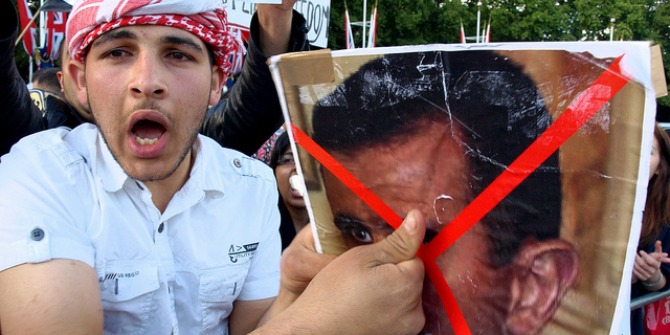This book aims to examine the principal arguments for and against the use of unmanned aerial vehicles for surveillance and “targeted killing.” Lenneke Sprik finds that the book is a great contribution to the field of military studies, and will be of specific interest to those interested in US foreign and defence policy.

Sometimes it is difficult to perceive that the future of warfare will at some point be dominated by technology rather than humans. With the ‘war on terror’ launched by former President Bush Jr. following 9/11, the debate about the legality and morality of using unmanned aerial vehicles (UAVs) has heightened over the last decade. James DeShaw Rae, Associate Professor of Government at California State University, Sacramento, felt the momentum was there to assess this debate from different perspectives in his book, including the public policy, ethical, security, and legal points of view. In doing so, Rae tries to find a proper balance between criticizing the use of drones (a more popular term used for UAVs) one the one hand, and explaining the benefits from the military point of view on the other. The work provides a well-researched overview of the debate and highlights both the praises and concerns voiced in the US political, military, and academic spectra. The book may therefore be of specific interest to students and scholars interested in American foreign policy, counter-terrorism strategies, and the use of military technology in general.
Consisting of just four body chapters, the book is noteworthy for its compact, manageable size. It succeeds in discussing the main aspects of the debate while not becoming bogged down in a plenitude of opinions. The first main chapter discusses the national security take on the use of drones, and features a wide range of topics such as the financial aspects and the psychological effects on the drone ‘pilots’ versus regular military aircraft pilots. Rae also addresses the efficiency of drone warfare and compares this new technology with other technologies of warfare. This chapter includes the unavoidable and most disputed aspect of the debate: civilian casualties and collateral damage. An important and rightly made remark in this specific section is that reports on this issue are to be taken with ‘a grain of salt’. This is something that has been addressed in scholarly writings more often: the reports and media coverage of drone warfare tend to be so focused on the civilian casualty matter that they hardly provide a realistic account of what drones actually can or cannot do. Rae also demonstrates here that the data used by research agencies may at times be quite divergent, depending on the standards used, potentially leading to different conclusions.

Chapter 3 focuses on the other widely debated topic within the discussion on drones: the legality of the use of UAVs. This includes a more specific analysis of whether killing alleged terrorists with this type of weapon is in compliance with the Jus In Bello framework. At the same time, it also considers the use of drones in situations where the threshold of an armed conflict will usually not be reached, which is then seen as the use of drones for the purpose of law enforcement. The laws applicable to law enforcement situations will generally make it more difficult to use drones for lethal purposes. At times, this chapter reflects the debate on the general principles of international humanitarian law rather than discussing the application of the laws of war on drone warfare. This is the stage where Rae focuses more specifically on the legality of targeted killing in counter-terrorism activities.
For many readers, the ethical debate in Chapter 4 will be of specific interest, since that may be seen as one of the more exciting aspects to the debate. Rae successfully tries to capture the complex dynamics between the local population in the target area and the state launching the attack. He explains in a comprehensive way how attacking certain areas, even though with the best intentions, may be morally perceived as an act of aggression by the local population. Another topic discussed in this short chapter is the risk of dehumanization of armed conflict. The fact that the individual controlling the UAV is not subject to the same emotions and influences as a soldier who is actually present in the conflict area means that killing may potentially become easier for the drone ‘pilot’. It may at least take away some considerations of ‘due care’ that are naturally inflicted upon soldiers when confronted with the consequences of warfare in their direct surroundings. At the same time, Rae notes that human warfare has not proven to be that successful, so it is not unlikely that machines may be better at it.
With his analysis of the domestic use of drones, including a specific focus on the aspect of privacy, Rae concludes his book having discussed all of the noteworthy perspectives on the use of drones. It is precisely this which makes the book such a commendable read: it really does cover an impressively wide range of considerations, while also enabling a more in-depth analysis of the most intriguing aspects to the debate. Overall, the book is a great contribution to the field of military studies, and will be of specific interest to those interested in US foreign and defence policy.
Lenneke Sprik is a PhD candidate in Public International Law at the University of Glasgow. She holds master degrees in both International Relations and Military law and has been focusing on ethnic conflict, conflict analysis, military interventions and military law for several years now. Lenneke tweets @LennekeSprik, and you can find more about her research here.







